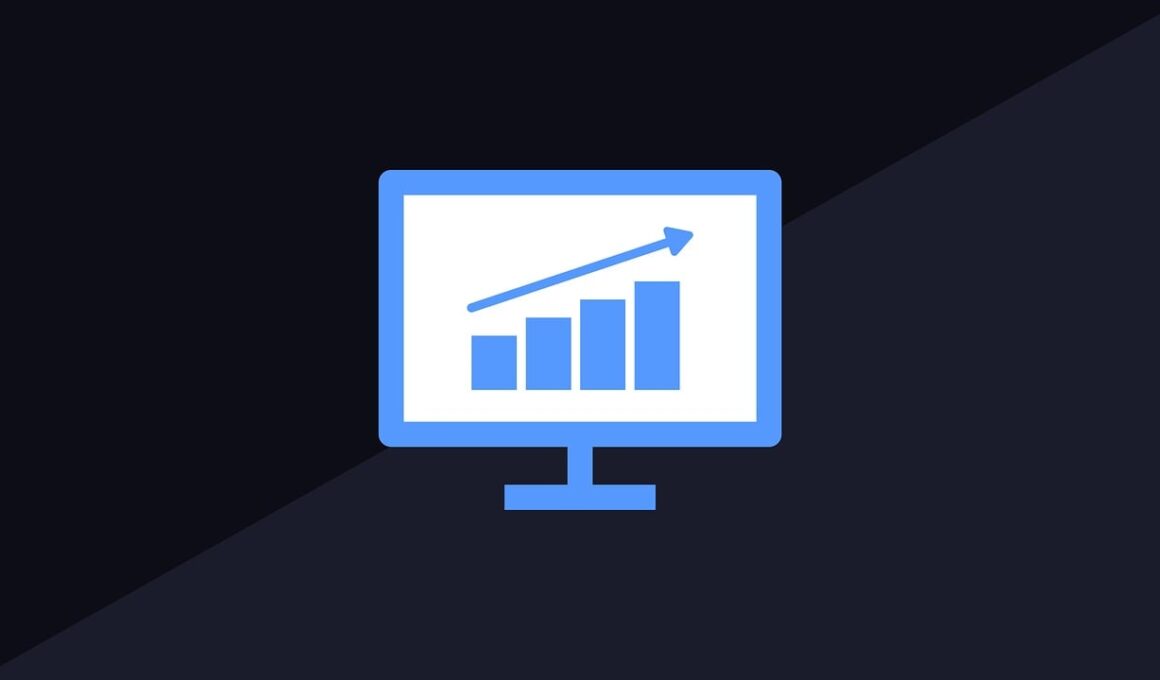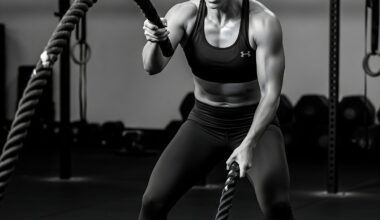Body Composition Analysis: Comparing Apps and Traditional Methods
Body composition analysis is an essential aspect of understanding overall health and fitness. Whether you are an athlete or someone striving to maintain a healthy lifestyle, knowing your body composition can guide your nutritional and exercise choices. Traditional methods of measuring body composition include skinfold calipers, bioelectrical impedance scales, and hydrostatic weighing. These methods have been widely used for years in clinical and fitness environments. While each of these techniques has its own advantages, they often require specialized equipment or trained personnel. On the other hand, technology has brought forth a new horizon in the form of body composition apps and software tools. These allow for convenient tracking of body metrics such as body fat percentage, muscle mass, and hydration levels, all from the comfort of home. Mobile applications can offer a user-friendly interface, instant tracking capabilities, and the ability to visualize progress over time. Comparing these apps to traditional methods raises interesting questions about accuracy, accessibility, and practicality in achieving health and fitness goals. Understanding these nuances is vital for individuals dedicated to improving their body composition.
Advantages of Body Composition Apps
Body composition apps provide unique advantages that appeal to a wide range of users. For starters, they simplify the data collection process and make it more accessible to everyone. Most apps come equipped with features that allow users to input their weight, measurements, and even food intake throughout their journey. This creates a centralized hub for tracking progress in a visually engaging manner. Additionally, many of these applications adopt user-friendly designs, making them easier to navigate than complex traditional tools that often require technical knowledge. Moreover, some body composition apps utilize innovative technologies, such as machine learning algorithms, to provide accurate predictions on body composition metrics. Users can therefore receive more tailored recommendations based on their specific physiology and workout routines. The convenience factor cannot be overstated, as these applications allow users to take measurements and log their data anywhere. These advancements empower individuals to take charge of their health in a way that traditional methods simply cannot match. The engagement and encouragement provided by these apps can significantly boost motivation and adherence to health programs.
Despite the appealing features of body composition apps, there are noteworthy limitations that users must consider. First, accuracy remains a compelling concern. Many apps rely on user-inputted data and algorithms that may not always reflect true body composition stats. Unlike traditional methods that employ sophisticated equipment, such as DEXA or hydrostatic weighing, apps can only provide educated estimates of one’s body composition. Moreover, the knowledge gap can lead to inconsistencies in measurement techniques when users are not sufficiently trained. Users may not record their data accurately or may misuse the tools available in the app. Furthermore, while some apps offer customizable plans and feedback, this may not be based on extensive scientific principles, leading to misguided advice. It is crucial for users to approach these applications cautiously, understanding that, while they provide valuable insights, they are not a substitute for professional guidance. A combination of app tracking and consultations with qualified health professionals may yield the most effective results in body composition analysis endeavors. This integrative approach ensures both accuracy and adaptability to changing health needs.
Traditional Methods: Accuracy and Reliability
Traditional methods of body composition analysis have stood the test of time, largely due to their reliability. Techniques such as DEXA scans, hydrostatic weighing, and bod pod assessments offer precise measurements of fat and lean mass. For example, DEXA scans are often considered the gold standard in body composition assessment due to their ability to accurately differentiate between tissue types using X-ray technology. Hydrostatic weighing also provides thorough insights by measuring body density, making it highly reliable. These traditional methods are carried out under controlled conditions, ensuring consistency and reducing variables that could skew results. Furthermore, many fitness and medical professionals depend on these techniques for clinical assessments because they provide comprehensive data on overall health. However, the accessibility of these traditional techniques may be limited due to costs and the need for specialized facilities. Such limitations can deter individuals from regularly monitoring their body composition. Nevertheless, relying on traditional methods remains invaluable when precision is paramount, particularly for athletes and individuals undergoing significant lifestyle changes.
When comparing body composition apps to traditional methods, it’s imperative to analyze the context in which each is used. Body composition apps are ideal for daily tracking and progress monitoring, particularly for individuals looking for flexibility and convenience. On the contrary, traditional methods shine in contexts requiring meticulous precision and accountability. For example, athletes training for competitive events might prefer the accuracy of DEXA scans to guide their nutritional strategies, which is crucial for optimal performance. Alternatively, fitness enthusiasts seeking to maintain general wellness may find apps sufficient for setting realistic goals and tracking changes over time. The choice between these two approaches ultimately comes down to individual objectives, preferences, and readiness for guidance. Adopting a hybrid approach, combining routine app usage for daily feedback with periodic traditional assessments, often maximizes the benefits of both methods. This comprehensive perspective allows for real-time adjustments to personal health strategies while maintaining the precision of occasional clinical evaluations, thus supporting sustained progress in body composition goals.
Conclusion: Finding the Right Balance
In conclusion, the evolution of body composition analysis tools highlights the importance of both technology and traditional methodologies. Users must find a balance between the convenience of body composition apps and the accuracy of traditional methods. For those embarking on a fitness journey or striving for specific health goals, these tools can complement each other effectively. Apps offer immediate, practical insights regarding daily habits, making them indispensable for lifestyle adjustments. Meanwhile, traditional methods provide critical insight that can validate progress. As technology continues to advance, the integration of features from both worlds may lead to even better solutions for body composition assessment. Ultimately, recognizing the strengths and limitations of each approach equips individuals to make informed choices about their health journey. This balanced perspective furthers knowledge and encourages personal empowerment. Adopting a proactive stance toward body composition not only promotes physical well-being but also enhances mental motivation. With deliberate monitoring and a readiness to adapt, one can achieve, maintain, and celebrate their body composition goals effectively.
As more individuals prioritize health and fitness in their daily routines, understanding the nuances of body composition analysis will become increasingly significant. The ongoing debate between body composition apps and traditional methods will only intensify as technology continues to evolve. While both have their distinct advantages and disadvantages, embracing a flexible yet informed approach can yield optimal results in health management. It’s vital to encourage further research and advancement in the realm of body composition tools, ensuring they uphold efficacy and accessibility for users across various demographics. By leveraging a combination of both technologies, individuals can tailor their approaches to fit personal needs and lifestyles, fostering a more inclusive interpretation of health. Cross-collaboration between app developers, technologists, and health professionals will serve as an avenue for developing enhanced tools that bridge gaps between traditional techniques and modern conveniences. With the right support, individuals can interpret their body composition data within the broader context of their overall wellness journey. As such, staying informed and proactive holds the key to realizing long-term health benefits.
The Future of Body Composition Analysis
The future of body composition analysis holds tremendous potential as technology integrates further into our health routines. Anticipated advancements could not only improve the accuracy of apps but also introduce innovative methods that are more accessible. Features such as augmented reality and wearable devices may soon offer real-time feedback, allowing users to view their body composition in a more interactive manner. Additionally, the potential for artificial intelligence to provide personalized health insights based on detailed user data can pave the way for tailored health regimens. As demand grows for at-home health solutions, we may see a surge in user-friendly devices that provide advanced metrics without sacrificing precision. Ensuring these advances are rooted in scientific validation is critical for maintaining trust and ensuring effectiveness. Partnerships or collaborations between tech companies and healthcare professionals will be vital in developing reliable applications that people can confidently rely on. In pursuing these technological innovations, it is essential to keep health education at the forefront. Only in doing so can individuals maximize the benefits of these emerging tools and foster informed, lifelong health practices.


